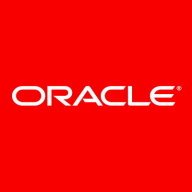

MySQL and Oracle Multitenant are competitive database solutions with distinct strengths. MySQL, with its open-source nature and affordability, has the upper hand in cost-effectiveness and ease of deployment, particularly for small to medium-sized businesses. Oracle Multitenant, however, excels in providing advanced enterprise features and resource management, making it preferable for larger organizations seeking high scalability.
Features: MySQL is highly valued for its multi-threaded architecture, strong integration capabilities with LAMP/WAMP stacks, and support for a broad range of programming languages. Oracle Multitenant, on the other hand, provides unparalleled database consolidation features, efficient resource management via pluggable databases, and top-notch security and data recovery options.
Room for Improvement: MySQL could benefit from enhancements in complex data handling capabilities, advanced database management features, and integration approaches. Oracle Multitenant, while offering robust features, faces challenges with high licensing costs and the need for better backward compatibility to ease migration concerns.
Ease of Deployment and Customer Service: MySQL offers simplicity in deployment across various environments, contributing to its cost advantages, though its support relies heavily on community efforts. Oracle Multitenant typically involves more structured deployments with higher initial costs but provides strong, enterprise-level customer support at a premium.
Pricing and ROI: MySQL is often viewed as a cost-effective choice with significant ROI, ideal for businesses looking to minimize investment. In contrast, Oracle Multitenant, despite its higher costs, is justified by its performance and robustness, serving larger enterprises focused on long-term benefits and reliability.


MySQL is a cost-efficient and scalable relational database management system widely used in web, mobile applications, and academic projects.
MySQL is utilized for backend operations, data analysis, reporting, financial transactions, and ERP databases. It supports deployment on local servers, Cloud, and Kubernetes. Its free, open-source nature along with strong community support make it popular among companies. MySQL's compatibility with multiple platforms and programming languages enhances its appeal. While it remains stable and easy to use, areas such as replication, clustering, and backup require improvement to better serve enterprise applications. Enhanced security, error messages, and monitoring tools are also desired for a better user experience.
What are the most important features of MySQL?In multiple industries, MySQL supports internal applications, billing systems, academic teaching purposes, and ERP databases. Companies leverage MySQL for Cloud and local deployments, ensuring effective data manipulation and backend operations in diverse projects. Its role in financial transactions and reporting further emphasizes its versatility.
Oracle Multitenant - an Oracle Database 12c Enterprise Edition option – introduces a new architecture that enables customers to easily consolidate multiple databases, without changing their applications. This new architecture delivers all the benefits of managing many databases as one, yet retains the isolation and resource prioritization of separate databases. In addition, Oracle Multitenant enables rapid provisioning and upgrades, and fully complements other options including Oracle Real Application Clusters and Active Data Guard.
For more information on Oracle Multitenant, visit Oracle.com
We monitor all Relational Databases Tools reviews to prevent fraudulent reviews and keep review quality high. We do not post reviews by company employees or direct competitors. We validate each review for authenticity via cross-reference with LinkedIn, and personal follow-up with the reviewer when necessary.